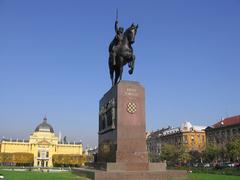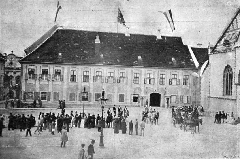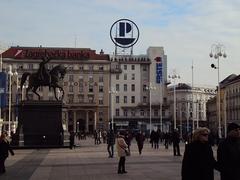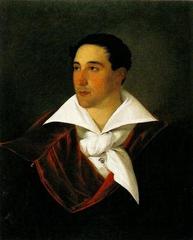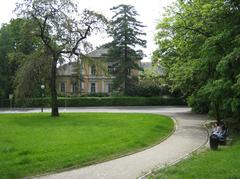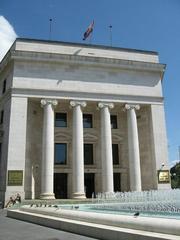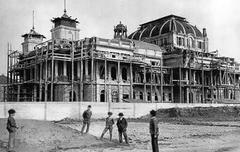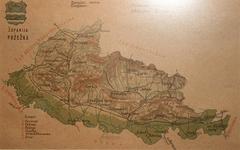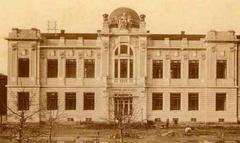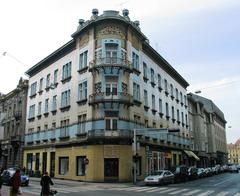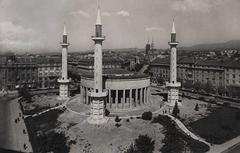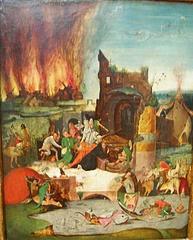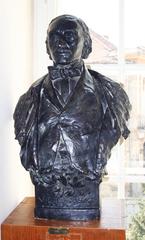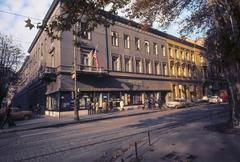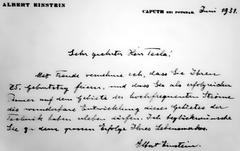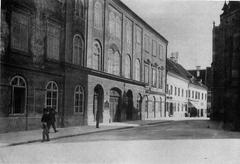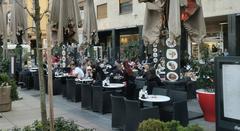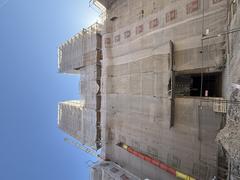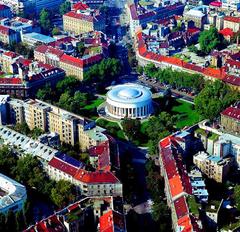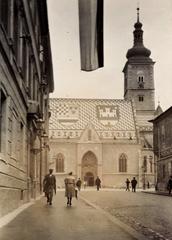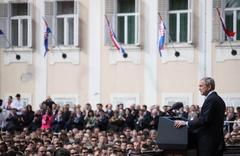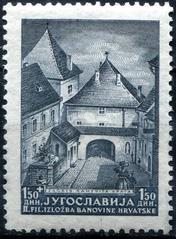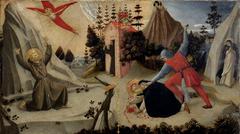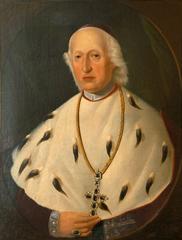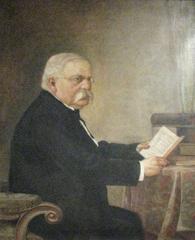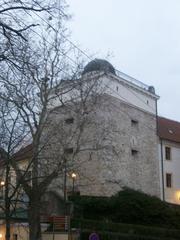Glyptotheque Zagreb Visiting Hours, Tickets, and Historical Site Guide
Date: 14/06/2025
Introduction to the Glyptotheque Zagreb
Nestled in the historic Gornji Grad - Medveščak district, the Glyptotheque of the Croatian Academy of Sciences and Arts (Gliptoteka HAZU) is one of Zagreb’s most distinctive cultural landmarks. Dedicated primarily to sculpture—especially plaster casts that chronicle Croatia’s rich artistic heritage—the museum is housed in a beautifully restored 19th-century industrial tannery. The Glyptotheque preserves and showcases over 13,000 sculptures, casts, and reliefs, offering a fascinating journey through Croatian art, from medieval masterpieces to contemporary works. It serves as a center for education, conservation, and the promotion of Croatian cultural identity within the European context. This comprehensive guide provides essential information on visiting hours, ticketing, accessibility, notable exhibits, nearby attractions, and practical tips to make the most of your visit. For the latest updates, including virtual tours during ongoing renovations, consult the official Glyptotheque website, Frank About Croatia, and ReviewEuro.
Table of Contents
- Discover the Glyptotheque: Zagreb’s Unique Sculpture Museum
- Visiting Hours & Tickets
- Accessibility & How to Get There
- Nearby Attractions
- Highlights of the Glyptotheque Collection
- Architecture & Atmosphere
- Special Events & Guided Tours
- Virtual Visits & Museum Status
- FAQs
- The Glyptotheque’s Cultural Role
- Educational and Scholarly Impact
- Community and Cultural Programming
- Visitor Information & Facilities
- Notable Photographic Spots
- European Significance & International Recognition
- Impact on Contemporary Croatian Art
- Social and Symbolic Value
- Practical Tips and Recommendations
- Call to Action
Discover the Glyptotheque: Zagreb’s Unique Sculpture Museum
Located at Medvedgradska Street 2, the Glyptotheque is a must-visit for art lovers and cultural travelers exploring Zagreb’s historical sites. The museum’s extensive collection includes Croatian and international sculpture, with exhibits spanning from ancient times to the present day. Its setting in a preserved industrial building lends a unique atmosphere, blending history and art.
Visiting Hours & Tickets
- Standard Hours: Tuesday to Sunday, 10:00 AM – 6:00 PM
- Closed: Mondays and public holidays
Ticket Prices:
- Adults: 30–40 HRK (Croatian Kuna), depending on exhibition
- Students/Seniors: 15–20 HRK
- Children under 7: Free
- Group tours and special exhibitions may have separate pricing
Tickets can be purchased at the entrance or online via the official website. Note that only cash (HRK or Euros) is accepted onsite (ReviewEuro)—please bring sufficient cash.
Accessibility & How to Get There
The Glyptotheque is easily accessible:
- By Tram: Lines 12, 13, and 17, with stops close to Gornji Grad
- By Bus: Several city lines serve the area
- On Foot: A 15-minute walk uphill from Ban Jelačić Square
The museum offers wheelchair access at the entrance and accessible restrooms. Some areas may have limited access due to the building’s historic features; visitors with special needs are encouraged to contact the museum in advance for assistance.
Nearby Attractions
Enhance your visit by exploring these nearby cultural sites:
- St. Mark’s Church: Renowned for its colorful roof
- Museum of Broken Relationships: A unique, award-winning museum
- Zagreb Cathedral: Iconic Gothic architecture
- Lotrščak Tower: Panoramic views over Zagreb
Highlights of the Glyptotheque Collection
The museum’s collection comprises approximately 13,000 works, including:
- Plaster casts of Croatian monuments from the 9th to 15th centuries (pre-Romanesque, Romanesque, and Renaissance)
- Original sculptures by renowned artists such as Ivan Meštrović, Robert Frangeš-Mihanović, Antun Augustinčić, and Frano Kršinić
- Contemporary works and a dynamic Sculpture Park with large-scale modern art
The Glyptotheque hosts the prestigious Triennial of Croatian Sculpture, spotlighting contemporary trends in the field.
Architecture & Atmosphere
The museum’s industrial heritage—high ceilings, exposed brickwork, and large windows—creates an inspiring setting for sculpture exhibitions. The tranquil garden and outdoor Sculpture Park are perfect for relaxation and photography.
Special Events & Guided Tours
Regular guided tours, workshops, and lectures are available, deepening visitors’ understanding of Croatian sculpture and art history. During events like the Triennial, the museum features temporary exhibitions and international collaborations. Guided tours and educational programs are available in English upon request; booking in advance is recommended.
Virtual Visits & Museum Status
As of June 2025, the Glyptotheque is temporarily closed for renovations due to earthquake damage. However, virtual exhibitions and online educational programs remain accessible on the Glyptotheque’s website.
Frequently Asked Questions (FAQs)
Q: What are the Glyptotheque visiting hours?
A: Tuesday to Sunday, 10:00 AM – 6:00 PM; closed Mondays and public holidays.
Q: How much are the tickets?
A: 30–40 HRK for adults; discounts for students/seniors; free for children under 7.
Q: Is the Glyptotheque wheelchair accessible?
A: Yes, with some limitations due to the historic building.
Q: How can I get there by public transport?
A: Tram lines 12, 13, and 17 or by bus; also walkable from the city center.
Q: Is photography allowed?
A: Photography without flash or tripods is permitted in most areas; some special exhibitions may restrict it.
Q: Are guided tours available?
A: Yes, by appointment; contact the museum for details.
Q: Does the Glyptotheque accept cards?
A: Only cash is accepted at the entrance.
The Glyptotheque’s Cultural Role
Founded in the 19th century, the Glyptotheque reflects the Romantic-era trend of national cast collections, shaping and preserving Croatian identity. Its casts and original works safeguard fragile or remote masterpieces, making them accessible for study and appreciation.
Educational and Scholarly Impact
The museum supports academic research, artist training, and international collaboration, enabling comparative studies with other European institutions.
Community and Cultural Programming
By hosting exhibitions, workshops, and events, the Glyptotheque engages diverse audiences—from school groups to international visitors—promoting the relevance of sculpture in contemporary life.
Visitor Information & Facilities
- Restrooms and cloakrooms available
- No on-site café, but several options nearby
- Gift shop with art books and souvenirs
Notable Photographic Spots
The museum’s galleries, garden, and the Sculpture Park are perfect for photography, with natural light highlighting the details of sculptures and architectural elements.
European Significance & International Recognition
The Glyptotheque belongs to a tradition of European plaster cast museums, emphasizing Croatia’s unique artistic contribution. While less internationally known, it is highly regarded by cultural tourists and art historians.
Impact on Contemporary Croatian Art
By preserving and displaying historical works, the museum inspires new generations of artists and fosters dialogue between the past and present.
Social and Symbolic Value
The Glyptotheque stands as a testament to Croatia’s commitment to cultural heritage, symbolizing resilience and artistic achievement.
Practical Tips and Recommendations
- Bring cash for tickets (no card payments)
- Visit on weekday mornings for a quieter experience
- Spend 1–2 hours exploring galleries and the garden
- Check the museum website for current exhibitions and accessibility updates
- Combine your visit with nearby attractions for a full cultural itinerary
Call to Action
Ready to explore the Glyptotheque and Zagreb’s vibrant museum scene? Download the Audiala app for audio guides and interactive maps, and follow the Glyptotheque and Croatian Academy of Sciences and Arts on social media for updates on events, exhibitions, and reopening dates.
Summary and Final Tips
The Glyptotheque of the Croatian Academy of Sciences and Arts is a cornerstone of Croatia’s dedication to preserving and celebrating sculptural and architectural heritage. Despite temporary closures for renovation, it remains a vital resource through virtual exhibitions and educational programs. The museum’s historic setting, impressive collection, and commitment to accessibility and education make it an essential destination for art lovers and cultural explorers. To maximize your experience, plan ahead by checking official updates, prepare for cash-only payments, and combine your visit with other nearby attractions. Engaging with the Glyptotheque connects you to Croatia’s enduring cultural identity and its place in European art history.

